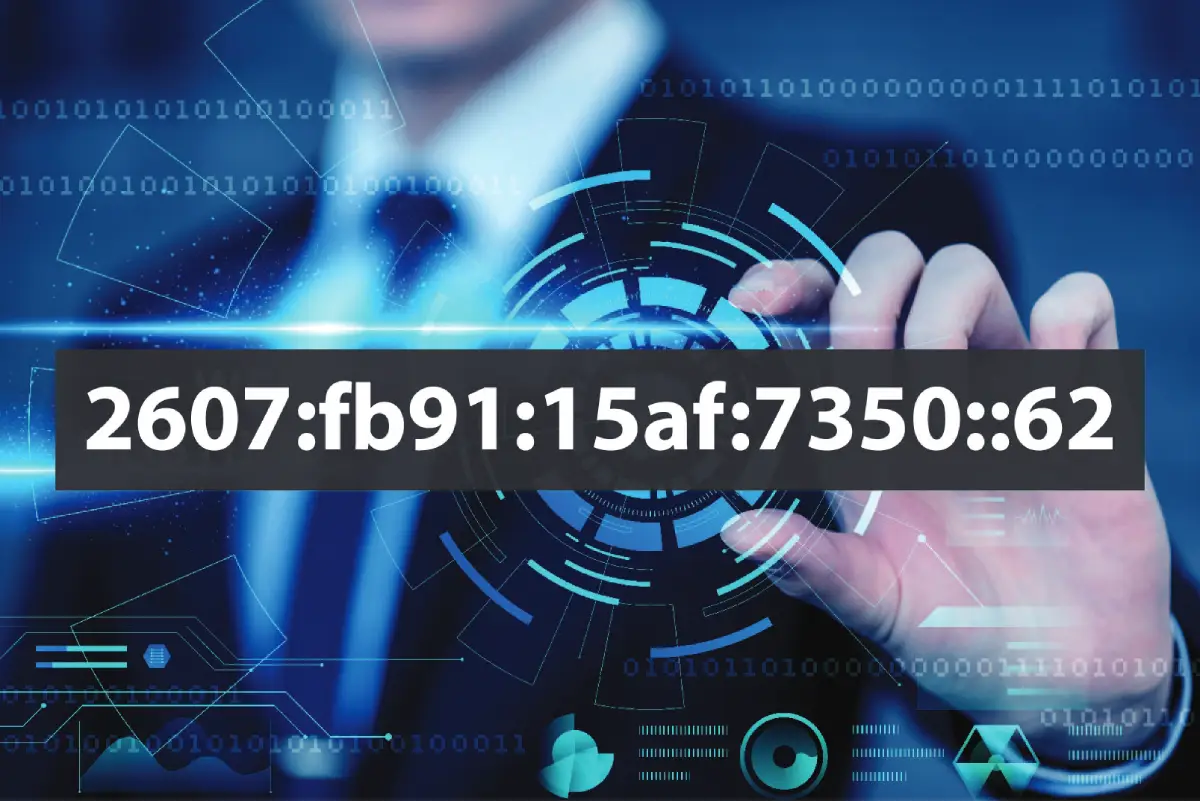IPv6 is an important part of the new generation of the Internet, intended to take over from the presently ineffective IPv4 addressing scheme inherent in the fast-growing communication environment. Unlike IPv4, which employs a 32-bit address system that generates a little over 4.3 billion IP addresses, IPv6 uses a 128-bit addressing system, yielding a mind-boggling number of addresses of about 340 undecillion. This substantial rise has led to the proliferation of devices that need internet client connections, such as IoT and other technologies.
Understanding the fundamentals of IPv6, including its structure and necessity in today’s world, sets the stage for a more comprehensive exploration of specific addresses such as 2607:Some of them include fb91:15af:7350::62 & their relevance to the larger question of the internet.
Table of Contents
Decoding the Specific Address 2607:fb91:15af:7350::62
The IPv6 address 2607:The sliced-up string fb91:15af:7350::62 constitutes a part of the Internet Protocol’s globally unique identifier. For a better understanding of the importance of this address, one needs to look at its part. The structure can be subdivided into eight hexadecimal numbers, as shown below, in an attempt to explain its operation within GUA. A Global Unicast Address, such as 2607:The strings such as http://w3/0xc0/301/d0/b3/fb91:15af:7350::62, can be directly routable and can mean that it is possible to communicate over the Internet space.

Specific to this address, various portions are to be allocated under the umbrella of Internet Assigned Numbers Authority (IANA), thus making it popular across the world. The initial octets, ‘2607’, are a globally routed number that tells routers around the world where to find this address; the subsequent octets, ‘fb91’, ‘15af’, and ‘7350’ are more specific information that helps the routers along the way deliver the packet to its destination. The ‘:Such as ’[004, 6 of max_so, 2 of min_so, relay_no=138400000634593270!SOG_DG_Sx_range:62’ at the end represents that only the string is shortened at the longest and some zeros in the numbers, the string is left out for saving length, but information for routing is not lost.
The consequences mentioned above suggest vast prospects for routing. An address like 2607:FB91:15AF:7350::62 works on behalf of a device to get connected in the IPV6 environment, which not only tends to be more effective compared to an old IPV4 address. In the current complex network settings, it is important to ensure that as many gadgets get appropriate identifiers as possible.
This address can be useful for this or that purpose in many different spheres of activity. Organizations employing data centers may leverage 2607:For web hosting or cloud services, this IP address is fasdis:15af:7350::62 for proper data transfer. Also, the increasing use of zařízení called the Internet of Things (IoT), enhances the applicability of IPv6 addresses due to their effectiveness and the possibility to scale vast,000,000,000 addresses.
The Significance of 2607:fb91:15af:7350::62 in the Modern Internet Landscape
IPv6 Address 2607:fb91:15af:7350::62 Powers IoT Growth
The advent of Internet Protocol version 6 (IPv6) has become increasingly pertinent in the context of modern internet usage, with specific addresses like 2607:Here is an account of the importance of symbols such as 2607:fb91:15af:7350::62. So over years and especially over the recent past where the realms of the digital universe are becoming broader than ever before, this problem of lacking a relatively large number of IPv4 addresses has led to the adoption of IPv6 all over the world. This transition enables both the distribution of an almost infinite number of addresses and the changing characteristics of IID devices related to the Internet of Things (IoT).
Global IPv6 Distribution
Management of the internet is important in addressing the challenges that are associated with the usage of internet resources like IPV6 addresses. The address 2607:fb91:15af:7350 demonstrates how regulation systems of the internet are being developed to support the newer protocol in order to enhance balance in the allocation of resources in the different parts of the world and among other users. They are important in the quest for parity in access to and utility of Internet resources and illustrate an important commitment to diverse usage of Internet resources.
IPv6 Address 2607:fb91:15af:7350::62 is Strengthening Internet Security
Consequences related to security when implementing IPv6 are also important. The encryption features present in the IPv6 version of the Internet protocol, as well as compiled intrinsic security mechanisms, make physical cyber threats less of a concern and improve the Internet security status. The specific address 2607:Every symbol, such as fb91:15af:7350::62, reflects a shift towards a safer Internet and electronic commerce and communications. Alongside this security framework, IPv6 also helps in the build-up of new technological solutions in networking solutions, like improved routing protocols and better means for the transmission of data, hence providing more reliability and performance across networking solutions.
IPv6 Address 2607:fb91:15af:7350::62 is Key to Internet Growth and Innovation
The importance of transitioning to IPv6, illustrated by addresses like 2607:The value fb91:15af:7350:62, should be emphasized. That cannot only be used for the future expansion of the Internet but also greatly help strengthen security, the government’s management, and the development of innovations in networking. While facing the challenges of a connected society, the move to IPv6 is still public and crucial for the continuation of progress and growth of services on the Internet.
Conclusion
The exploration of the IPv6 address 2607:By understanding the meaning of the network identifier 2607:fb91:15af:7350, there is light shed on the profound essence of the implementation of IPv6 as the world goes fully connected. While there is a constant increase in the number of devices that are connected to the internet for communication, it has become clear that IPv4 has the following disadvantages. IPv6 is a perfect example of a strong solution to this problem, as it has a theoretically infinite number of addresses that are needed for upcoming IoT and other applications.
In addition, enhancement of IP routing and address management is likely to proceed as IPv6 is increasingly implemented in our electronic framework. With advancements continuing in the internet space, knowing the ever-arising IPv6-related occurrences and advancements will often prove beneficial for those involved. Interacting with this changing environment will enable stakeholders to take benefit of the opportunities that areIPv6 offers towards a more connected and technologically informed society.






